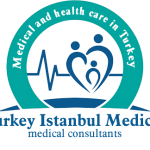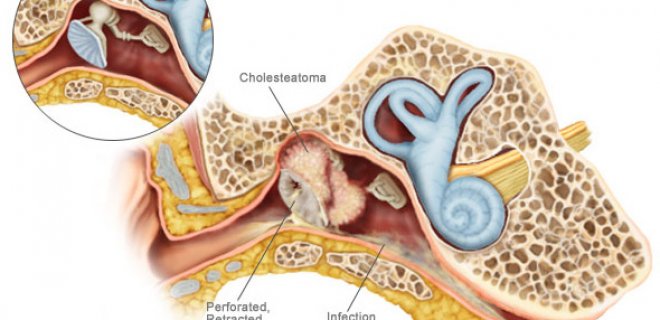What is a Cholesteatoma?
The presence of the superficial layer of skin in the ear canal and the superficial layer of skin outside the eardrum in the middle ear is called cholesteatoma. Cholestomas mainly develop due to chronic middle ear infections (chronic otitis media).
Rarely, it may be present from birth. In chronic otitis media, skin cells travel through the foramen of the eardrum to the middle ear. Here it accumulates and forms a bag. The cholesteatoma sac in the middle ear expands over time and begins to damage the middle ear ossicles and surrounding tissue.
How Does a Cholesteatoma Occur?
The skin of the external auditory canal (ear canal) and the epithelial tissue that covers the outermost layer of the eardrum are to a large extent identical to the skin that covers the outermost part of our body.
The main substance of our hair and nails is a substance called keratin. Keratin is a component that gives firmness to our skin and is produced by the cells on the surface of the skin. If the epithelial layer surrounding the surface of the outer membrane and the auditory canal enters the cavity of the middle ear, the production of keratin continues there.
Keratin, which is not in the structure of the middle ear and is completely foreign to it, causes reactions in the area. The tympanic membrane and ear canal epithelium can penetrate the middle ear cavity and become moderately involved. This condition is called cholesteatoma.
How Is Cholesteatoma Diagnosed?
Cholesteatoma is most often diagnosed by an ENT specialist during ear exams.
It is applied to tumor tissues for the diagnosis of cholesteatoma. It does not need to be biopsied.
However, a CT scan of the ear may be needed if it is not clearly visible during the examination to see how far the cholesteatoma has spread.
For this reason, in the event of symptoms, it is absolutely necessary to consult a specialized otolaryngologist.
What Causes Eardrum Thickening?
Fluid builds up in the Eustachian tube in the ear and this fluid causes blockages in the ear.
If this obstruction is not treated and corrected, it causes the eardrum to thicken and swell over time.
The deformations that thus occur in the eardrum press on the bony walls and the ossicles of the inner and middle ear.
Depending on the area where the damage occurred, problems such as imbalance, facial muscle weakness, and hearing loss occur.
Causes Of Cholesteatoma
Besides repeated infections, a cholesteatoma can also arise from the Eustachian tube, a tube that runs from the back of the nose to the middle of the ear. The Eustachian tube allows air to flow through the ear and equalizes ear pressure.
The Eustachian tube may not work properly for any of the following reasons:
- Chronic ear infections
- Sinus infections
- Common cold
- Allergies
If your Eustachian tube isn’t working properly, a partial vacuum can occur in your middle ear.
This can push part of your eardrum back into the middle ear, forming a cyst that can develop into a cholesteatoma. The growth then grows larger as it fills with old skin cells, fluids, and other waste products.
What Are The Symptoms Of Cholesteatoma?
- Ear infection
- Have a bad smell in the ear
- Temporary or permanent hearing loss
- Tinnitus
- Fear of heights
- Weakness of facial muscles
- Inner cavity of the ear
- Spread of the cyst to the brain
- Meningitis
- Brain abscess
- Permanent ear drainage
Potential Complications Of Cholesteatoma
The following complications can occur in chronic middle ear infections with cholesteatoma because cholesteatoma damages surrounding tissues and predisposes the middle ear to infection:
- Permanent hearing loss
- Inner ear inflammation
- Facial paralysis
- Meningitis
- Inflammation of brain tissue
- Earache
- Inflammation of the neck veins
What is the Treatment of Cholesteatoma?
Although antibiotics are used for discharge and analgesics are used for pain; As soon as the diagnosis of cholesteatoma is made, its treatment is surgical.
The type of surgery is determined by the extent of the cholesteatoma and surrounding tissue damage and complications.
Recently, it is aimed at reconstructing (restoring) the defects (damage) that occur with the complete elimination of the disease in surgery and restoring hearing.
Here, the first objective is to make the disease disappear, the second objective is to rebuild the hearing. Sometimes a second surgery can be done both to follow up the disease and to restore both control and hearing if the hearing was not reconstructed in the first stage. Patients with cholesteatoma must be under constant lifelong monitoring.

